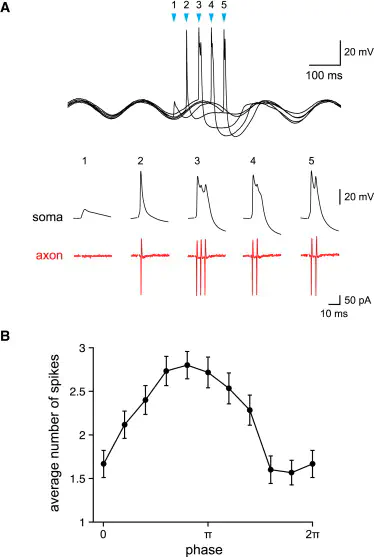
Abstract
The inferior olive gives rise to the climbing fiber input to cerebellar Purkinje cells and is therefore the source of one of the most powerful synapses in the brain, generating the large burst of Purkinje cell activity referred to as the complex spike. The timing of complex spikes plays a key role in theories of cerebellar function and the determinants of the temporal output structure of neurons of the inferior olive are thus of critical importance. Olivary neurons display spontaneous subthreshold oscillations (STOs) that are generated by the interplay of intrinsic voltage- and calcium-gated conductances and electrotonic coupling between groups of neurons that consequently oscillate in synchrony. Olivary action potentials are also complex, consisting of an initial spike followed by a plateau potential that drives a burst of axonal action potentials. The STOs can influence the timing of spike output and the number of spikes in the burst, implicating them in important downstream effects in the cerebellar cortex, such as complex spike timing, synchrony, and synaptic plasticity. STOs and the coupling between olivary neurons can be modified by extrinsic input, a key candidate being the afferent inhibitory connections forming the descending limb of the olivocerebellar loop. This may result in an olivary network with dynamic properties, which has led to theories of the olivocerebellar system as a generator of spatiotemporal patterns of firing. This chapter discusses evidence for these and competing models, as well as their implications for the production of motor rhythms.